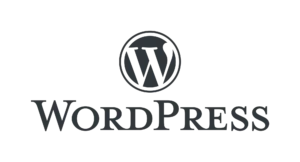10 Essential Steps to Secure Your WordPress Site in 2024
A Guide for Improved WordPress Site Security

In today’s increasingly digital world, WordPress site security is more important than ever. With cyber threats growing more sophisticated, it’s vital to implement strong security measures to protect your website from potential vulnerabilities. In this comprehensive guide, we’ll explore 10 key strategies to secure your WordPress site. Follow these steps diligently to safeguard your online presence and prevent unauthorized access.
1. Keep WordPress Core, Themes, and Plugins Updated
Regular updates are critical to maintaining a secure WordPress site. Both WordPress core updates and plugin/theme updates include essential security patches that address newly discovered vulnerabilities.
Tips:
- Enable automatic updates for minor WordPress releases.
- Regularly check for updates for your themes and plugins.
- Always update to the latest versions to minimize exposure to cyber threats.
2. Use Strong Usernames and Passwords
The simplest way to strengthen your WordPress site’s security is by using strong, unique usernames and passwords. Avoid common usernames like “admin,” and always choose hard-to-guess alternatives. Passwords should include a mix of uppercase letters, lowercase letters, numbers, and special characters.
Best Practices:
- Use a password manager to generate and store complex passwords.
- Regularly update your passwords to enhance security.
- Implement strong password policies for all users on your site.
3. Enable Two-Factor Authentication (2FA)
Two-factor authentication (2FA) provides an additional layer of protection by requiring users to verify their identity with a second factor, like a code sent to their mobile device or email, in addition to their password.
Benefits of 2FA:
- Significantly reduces the risk of unauthorized access.
- Protects user accounts from brute force attacks.
- Easy to set up using plugins like Google Authenticator or Authy.
4. Secure Your Login Page
The WordPress login page is a common target for hackers. Brute force attacks can overwhelm your login page, attempting countless username-password combinations.
How to Secure Your Login Page:
- Limit login attempts to deter brute force attacks.
- Use reCAPTCHA to distinguish between bots and humans.
- Customize the login URL to make it harder for attackers to find.
5. Choose a Secure WordPress Hosting Provider
Your hosting provider plays a significant role in your site’s security. Opt for a hosting provider that prioritizes security by offering features like SSL certificates, firewalls, malware scanning, and daily backups.
Key Features to Look for:
- Built-in DDoS protection.
- Secure Sockets Layer (SSL) certificates for data encryption.
- Regular server maintenance and software updates.
6. Install a WordPress Security Plugin
Adding a security plugin can greatly enhance your site’s defenses. A good WordPress security plugin will offer real-time malware scanning, firewall protection, and activity monitoring.
Recommended Security Plugins:
- Wordfence: Provides malware scanning, firewall protection, and brute force attack prevention.
- Sucuri: Offers website monitoring, malware cleanup, and DDoS protection.
- iThemes Security: Delivers login protection, file change detection, and strong password enforcement.
7. Regularly Back Up Your Website
Regular backups are crucial in case your website is compromised. By keeping an up-to-date backup stored in a secure location, you can quickly restore your website without losing important data.
Backup Tips:
- Use automated backup services like UpdraftPlus or BackupBuddy.
- Store backups in an offsite location, such as a cloud service.
- Schedule backups to occur daily or weekly, depending on the site’s activity.
8. Set Secure File Permissions
Incorrect file permissions can expose your site to unauthorized access and tampering. Set strict file permissions on key files and directories to prevent unauthorized changes.
Recommended Permissions:
- wp-config.php: Set to
440or400to prevent unauthorized reading. - wp-content/uploads: Set to
755for directories and644for files to control access.
9. Harden WordPress Configuration
Hardening your WordPress installation involves making adjustments to the site’s configuration files to limit vulnerabilities. Start by securing the wp-config.php file, which contains crucial information like database credentials.
Additional Hardening Tips:
- Disable file editing in the WordPress dashboard by adding
define('DISALLOW_FILE_EDIT', true);to yourwp-config.php. - Restrict access to sensitive files like
wp-config.phpand.htaccess. - Ensure that only trusted administrators can install new plugins or themes.
10. Monitor Your Website Regularly
Continuous monitoring is essential for detecting suspicious activity before it escalates. Implement monitoring tools that alert you to potential security breaches, malware infections, and unauthorized login attempts.
What to Monitor:
- User login activity and failed login attempts.
- Changes to core files, plugins, and themes.
- Suspicious traffic patterns or login attempts from unknown locations.
Securing your WordPress site should be a top priority to protect your online presence from evolving cyber threats. By following these 10 essential steps—updating your WordPress core, using strong passwords, enabling two-factor authentication, securing your login page, choosing secure hosting, installing a security plugin, backing up regularly, setting proper file permissions, hardening your WordPress configuration, and actively monitoring your site—you can significantly reduce the risk of unauthorized access and cyberattacks.
Take Action Today: Secure your WordPress site now and focus on what really matters—delivering a seamless, engaging experience for your visitors.
Entexion opens the door to your digital transformation journey
Services
- Shared Hosting
- Virtual Private Servers
- Dedicated Servers
- Server Management
Support
- Client Area
- Terms & Conditions
- Network Status
- Looking Glass

